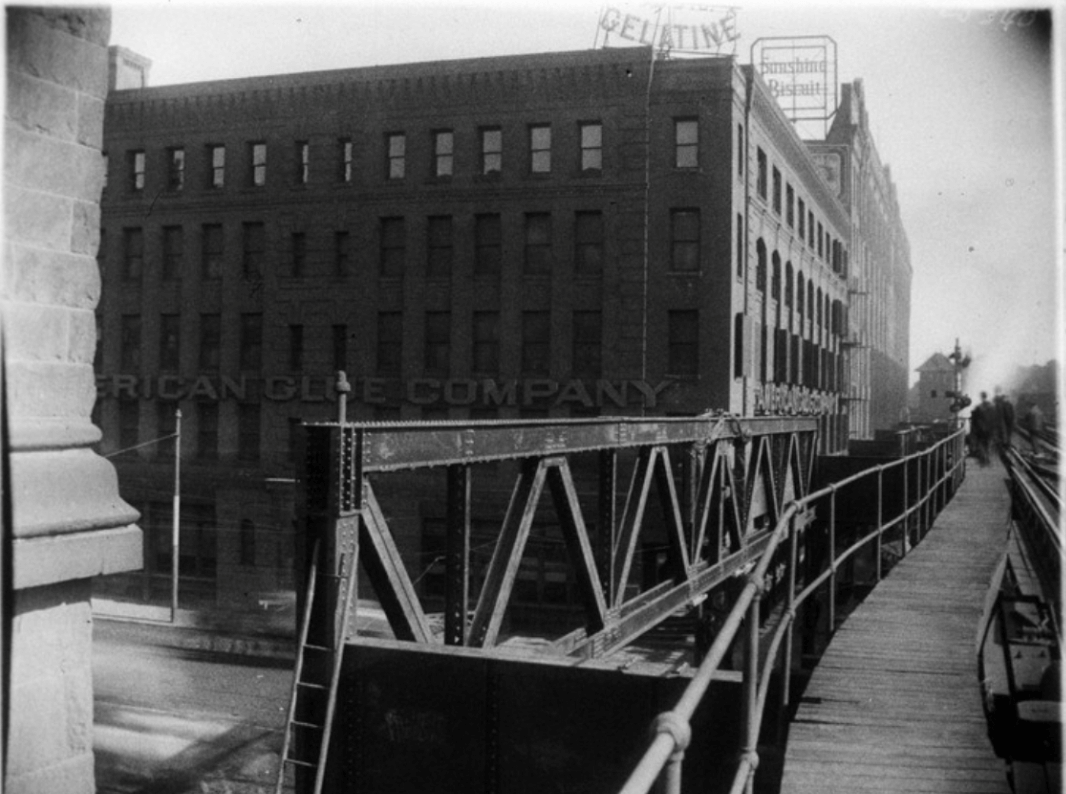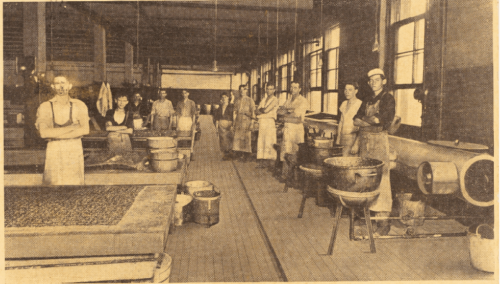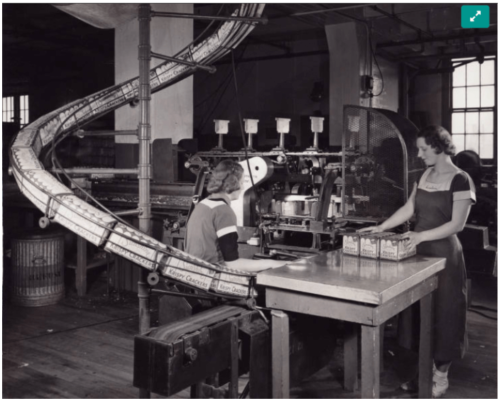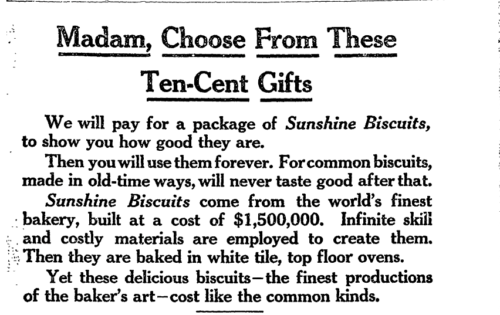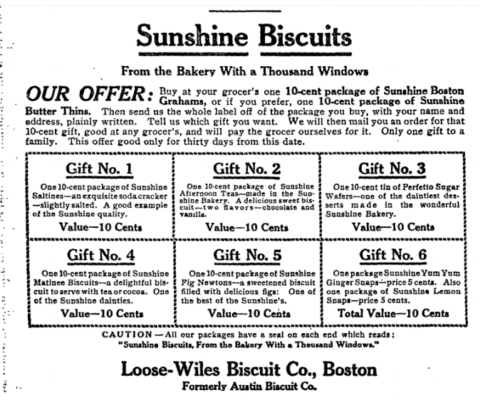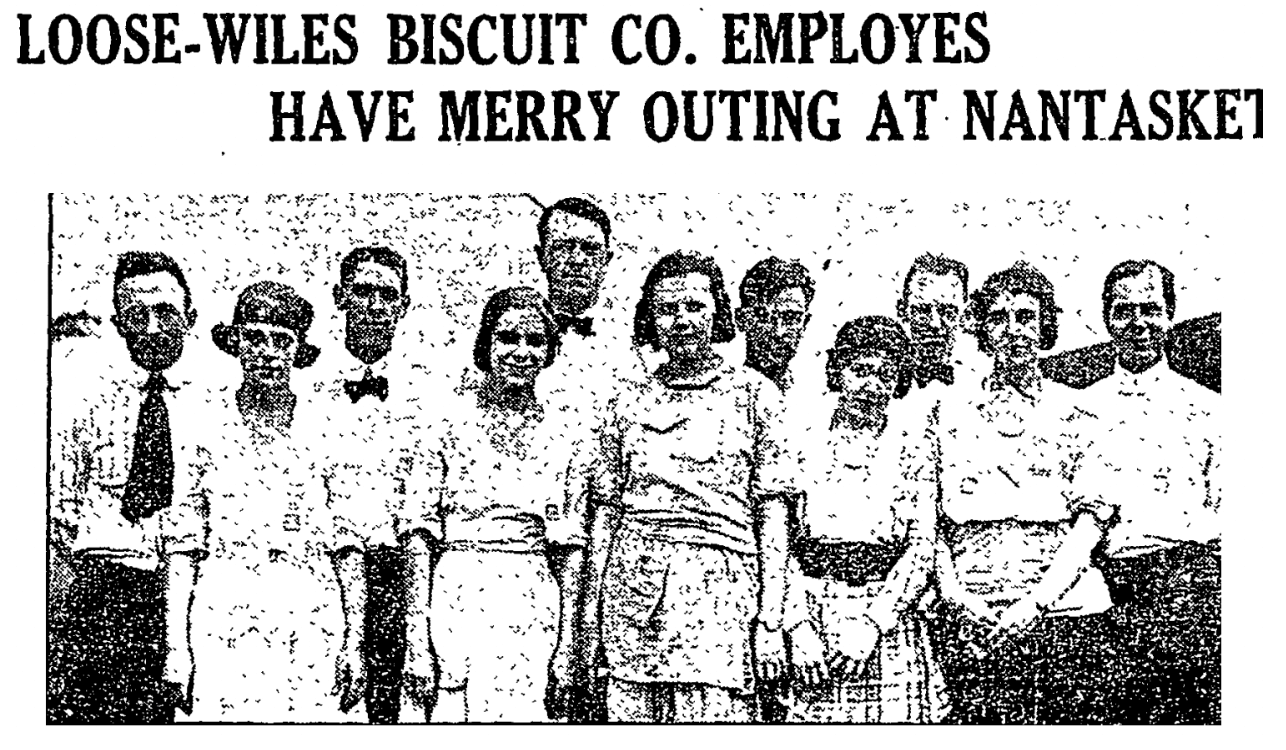The West End’s “Bakery with a Thousand Windows”
The Loose-Wiles Biscuit Company (previously Austin Biscuit Company, and later Sunshine Biscuit) opened its “bakery with a thousand windows” in the West End in the early 1900s. The company’s location on Causeway Street was an ideal spot to do business in Boston. Workers at the Loose-Wiles Biscuit Company formed a mutual aid association and formed close relationships through both work and play.
The Austin Biscuit Company opened its first Boston factory in 1906 at a brick building on 226 Causeway Street, in the historic West End, followed two years later with the opening of a new location on 176 Causeway St. This new biscuit factory, which cost $1.5 million in construction and new machinery, was “a six-story fireproof structure, with every conceivable improvement.” The building had 260,000 square feet of space and one-thousand windows. According to the Boston Globe, Austin Biscuit Co.’s location on Causeway Street was “an ideal situation…in the business part of the city, [and] handy to the railroad stations and steamboat landings.” Austin Biscuit Co. maximized the space with twenty-eight ovens on the top floor, large mixers, machines to shape the dough, and an assembly line of women and girls in the packing department (on the third floor). This efficient process allowed the Austin Biscuit Co. to create 300 styles of biscuits using 800 barrels of flour each day. The Globe lauded the factory, particularly for its openness to air and sunlight, as “one of the cleanest and best equipped in any section of the civilized world.”
The Austin Biscuit Company’s president was John L. Loose, who had been on the Board of Directors for Nabisco. He resigned from the board and sold his shares in Nabisco to found the Loose-Wiles Biscuit Company in Kansas City, MO in 1902, with his brother Jacob S. Loose and business partner John H. Wiles. The Loose brothers and Wiles called their product “Sunshine Biscuits” because they purposely designed their factories to take in a lot of sunlight. In addition to their Boston plant, Loose-Wiles also opened a factory in New York. In 1909, Austin Biscuit Co. in the West End adopted the Loose-Wiles name, and promoted itself as “the Bakery with a Thousand Windows.” The Loose-Wiles Biscuit Company in the West End produced “Sunshine Boston Grahams” and “Sunshine Butter Thins,” as well as saltines, afternoon teas, sugar wafers, fig newtons, and ginger snaps. In a June 1909 advertisement in the Globe, the Loose-Wiles Biscuit Company promoted its products to female consumers (“madam, choose from these ten-cent gifts”), and described its factory as “the world’s finest bakery.”
Factory workers at the Loose-Wiles Biscuit Company belonged to an Employees’ Mutual Benefit Association, in which employees pooled their resources to provide “sickness insurance” and death benefits to their co-workers. These kinds of workers’ associations were prevalent at many types of large businesses throughout the United States, and were inspired in part by the mutual aid societies founded by European immigrants. The Employees’ Mutual Benefit Association at Loose-Wiles organized their own yearly event for recreation, the first occurring on August 28, 1916 at the Villa Napoli hotel in Nantasket. Both men and women from the biscuit factory competed in various games at the hotel’s athletic fields, particularly sack races, tug-of-war, a 50-yard and 100-yard dash, a watermelon-eating contest, and baseball.
The Loose-Wiles Biscuit Company was financially successful, such that its net income (after taxes) in 1919 was over $2 million. On May 15, 1927, Robert Young of the Lovejoy Wharf Trust sold a large building, “occupying 42,900 sq. ft. land” at 250 Causeway Street, to the Loose-Wiles Biscuit Company. The property was valued at $910,000, and according to the Boston Globe the sale was facilitated in part by trust companies in Boston reducing their mortgage rates. The Loose-Wiles Business Company apparently owned multiple buildings along Causeway Street. In November 1945, the company advertised a “second class engineer” position at “Loose-Wiles Business Company, 226 Causeway Street,” or the address where Austin Business Company began in 1906.
In 1946, Loose-Wiles renamed the company Sunshine Biscuit, which was subsequently purchased by Keebler (1996) and Kellogg (2001). Following urban renewal in the West End in the late 1950s, Sunshine Biscuit opened a division on 36 New Street in Cambridge. The growth of the Loose-Wiles Biscuit Company reflects the historic significance of Causeway Street, a prime location for factories and other businesses in the early twentieth century.
Article by Adam Tomasi, edited by Bob Potenza
Sources: ProQuest/Boston Globe (“Thousand Windows,” September 1, 1908, page 3; “Outing Attracts 500,” August 28, 1916, page 11; “Reports of Annual Earnings,” February 26, 1920, page 11; Chas W. Restarick, “Real Estate Transactions,” May 15, 1927, page 34; Richard Kindleberger, “The Past Recaptured: Renewal, Expansion May Be In Store for 2 Old Buildings Near North Station,” January 7, 2001, J1), Kansas City Public Library, Finegold Alexander Architects, Northeast News, Historic New England


